From June 11 to October 10, 2021, the city of Carrara is hosting a four-location exhibition dedicated to one of the greatest sculptors of the 18th century, Giovanni Antonio Cybei (Carrara, 1706 - 1784). Entitled Giovanni Antonio Cybei and His Time. Distinguished Statuary for European Courts and Primary Director of the Academy of Fine Arts of Carrara, the exhibition is curated by Gerardo de Simone and Luciano Massari and takes place at the Academy of Fine Arts of Carrara, the CARMI Museum, Palazzo Binelli and Palazzo Cucchiari. It is the culminating event of the celebrations for the 250th anniversary of the founding of the Academy of Fine Arts of Carrara (1769-2019) and is promoted and realized by the Academy of Fine Arts of Carrara, with the collaboration of the Municipality of Carrara, the Fondazione Cassa di Risparmio di Carrara, the Giorgio Conti Foundation the Friends of the Academy of Fine Arts of Carrara and Dickens Fellowship Associations, with the Patronage of the Ministry of Culture, the Region of Tuscany, the Province of Massa Carrara, the Prefecture of Massa Carrara, the Italian Touring Club, and with the partnership of the Grendi Group, a historic company active since 1828 in Land and Sea Transportation Logistics.
Exhibitions on eighteenth-century pre-Canovian sculpture are rare, so the exhibition on Cybei is also meant to be a virtuous exception and to serve as a model in rediscovering and worthily enhancing artists, contexts, eras and cultures that are unjustly less known and publicized. The exhibition event benefits from an internationally renowned scientific committee that includes the most influential scholars of eighteenth-century sculpture: Sergey Androsov, director of the Department of Western Art at the Hermitage Museum in St. Petersburg; Andrea Bacchi, president of the Federico Zeri Foundation in Bologna; Liliana Barroero, emerita of History of Art Criticism at the University of Roma Tre; Marco Ciampolini, director of the CARMI Museum in Carrara; Francesco Freddolini, leading scholar of Giovanni Baratta, Cybei’s master; and Andrea Fusani, leading expert on Giovanni Antonio Cybei; Volker Krahn, curator of the Department of Sculpture of the Seventeenth and Eighteenth Centuries at the Staatliche Museen in Berlin; Daniele Sanguineti, professor of History of Modern Art at the University of Genoa; Cinzia Maria Sicca, professor of History of Modern Art at the University of Pisa; and Alison Yarrington, professor at Loughborough University and chair of the editorial board of the Sculpture Journal.
Cybei was, moreover, the first director of the Academy: the great artist worked for the most illustrious ruling houses of Italy and Europe, and the exhibition aims to offer a detailed reconstruction of the figure of Giovanni Antonio Cybei that fills a gap in the path of sculpture in the transition between Baroque and Neoclassicism. Of the artist, therefore, the entire span of his activity will be illustrated, from his training at the Baratta workshop at the Baluardo in the historic center of Carrara to the final 15 years of his life when Cybei was appointed director of the newly founded Academy of Fine Arts. More than a hundred works (from major public museums and private collections) including marble sculptures, plaster and terracotta models, drawings, prints, volumes, and paintings will be exhibited, and lost or immovable works will also be documented in the most appropriate way through visual and written sources.
 |
| Giovanni Antonio Cybei, Portrait of Ludovico Antonio Muratori (1773; marble, 93 x 66 x 36 cm; Modena, Biblioteca Estense) |
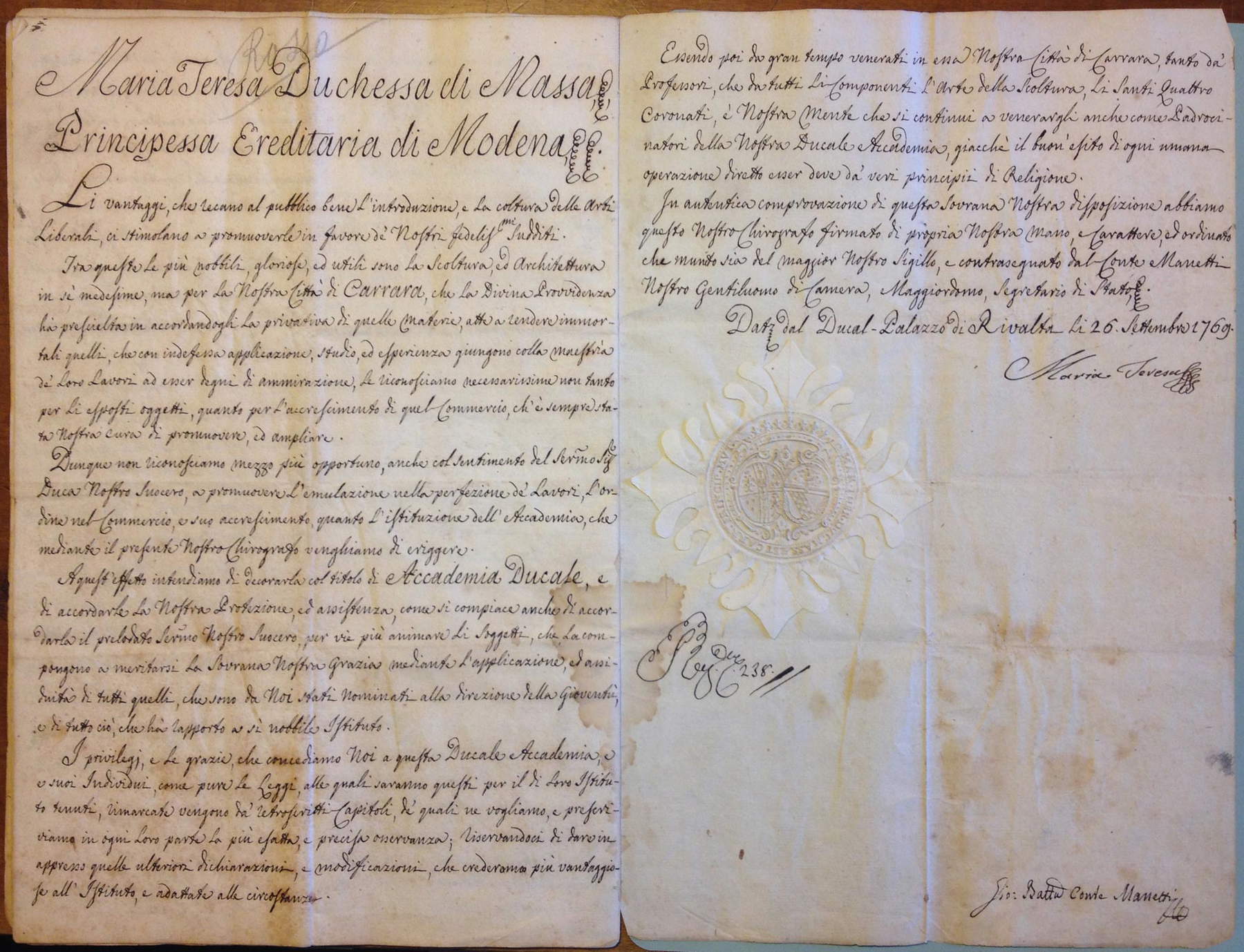 |
| Chirograph of the founding of the Academy of Fine Arts of Carrara (Nov. 26, 1769; ink on hand-prepared paper, 32.5 x 21.5 cm; Carrara, Academy of Fine Arts, Ancient Fund) |
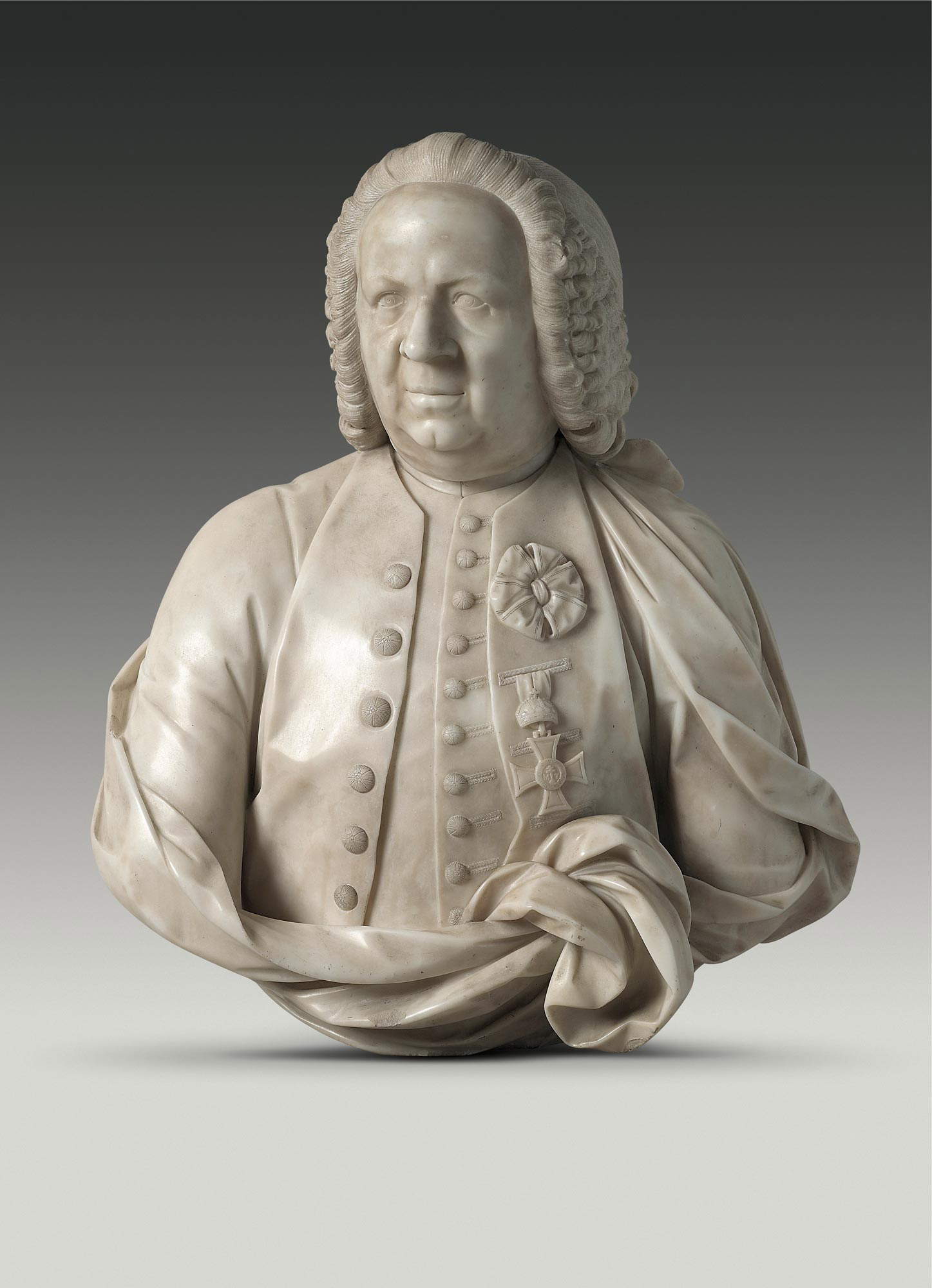 |
| Giovanni Antonio Cybei, Portrait of Pompeo Neri (1772; marble, 74 x 70 x 30 cm; Ferrara, Cavallini-Sgarbi Collection) |
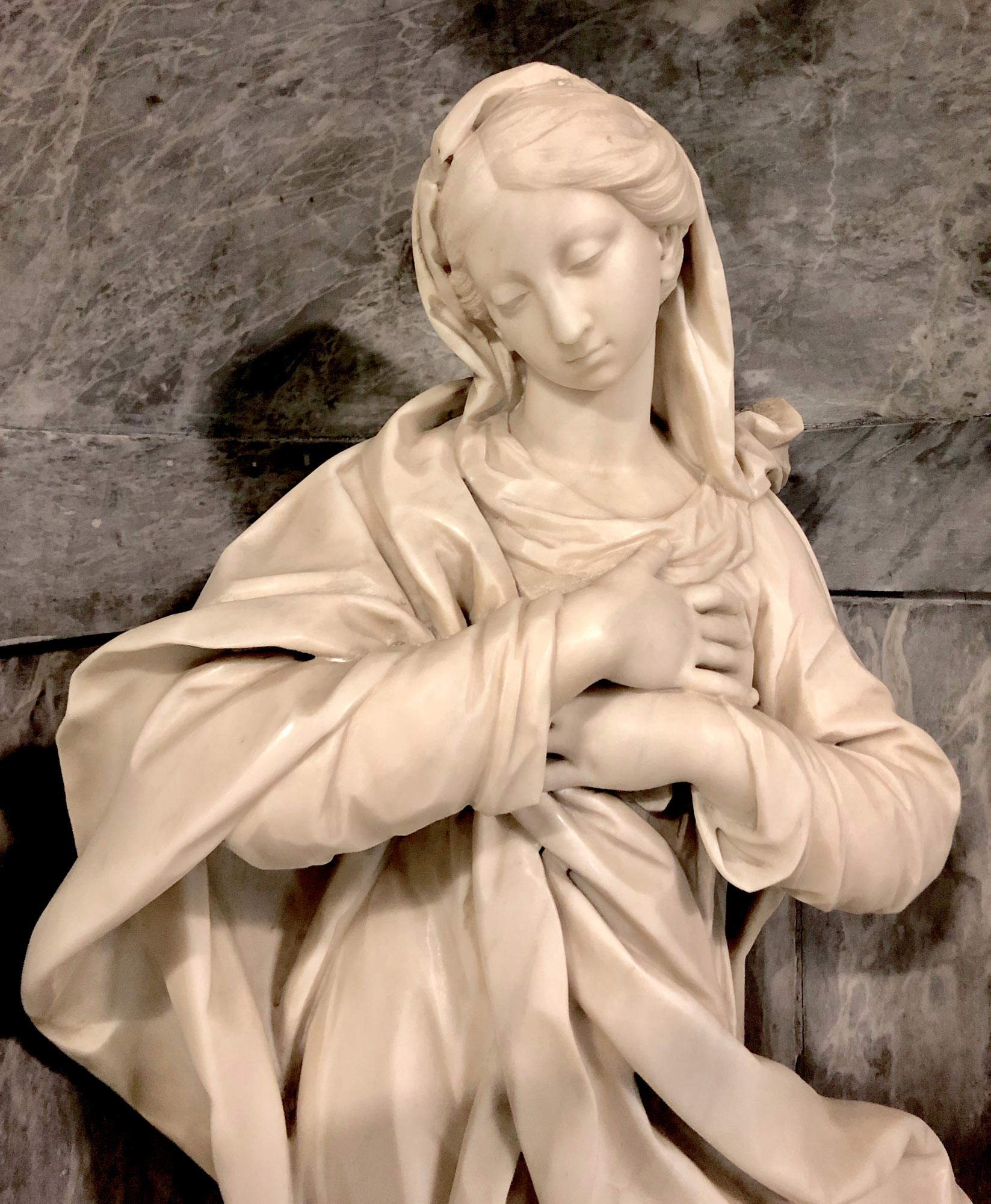 |
| Giovanni Antonio Cybei, Immaculate Conception (1742; marble, 123 x 36 x 30cm; Carrara, former Ospedale Civico) |
The exhibition, curated by architects Giuseppe Cannilla and Alberto Giuliani, is divided into four sections, as many as there are venues. In the headquarters of the Academy of Fine Arts, a classroom will house documentary, book and figurative evidence on the early activity of the Academy (including the founding chirograph, volumes, engravings, plaster casts, documents on Cybei as Director and as Sculpture teacher), and on the territory, with Saverio Salvioni’s famous views of marble quarries, and two splendid bird’s-eye maps of the Apuan coastline, one of which was made by Filippo del Medico, Inspector of the School of Architecture at the time of Cybei and designer of the Palazzo Rosso, commissioned as the headquarters of the Academy of Fine Arts and destined in the coming years to house the institute’s very rich Gipsoteca. At Palazzo Binelli, the public will find a focus on portraiture, the genre in which Cybei’s mastery was most recognized, with busts of distinguished aristocrats, politicians and scholars (Francesco Del Testa Del Tignoso, Bernardo Tanucci, Ludovico Antonio Muratori, Carlo Sigonio), and a room dedicated to Duchess Maria Teresa Cybo Malaspina, a well-deserving founder of the Academy of Fine Arts of Carrara. At Palazzo Cucchiari, there will be a section on the Grand Duke of Tuscany Pietro Leopoldo of Lorraine, an exponent of enlightened despotism, accompanied by an in-depth look at the colossal equestrian monument of Duke Francesco III d’Este in Modena, erected by Cybei in 1774 and destroyed in the revolutionary uprisings, illustrated by preparatory models, views, plans, documents and the only surviving fragment. Finally, at CARMI there will be a section on the Baratta workshop, with masterpieces by Giovanni and his brother Pietro, which will be flanked by an itinerary on Cybei’s sacred and monumental works (including the St. John the Baptist of the Volterra Baptistery and the model for the Fountain of the Putti in Piazza dei Miracoli in Pisa).
Also on display will be valuable comparative works by contemporary sculptors and painters (Jean-Baptiste Boudard, Michelangelo Borghi, Agostino Cornacchini, Domenico Andrea Pelliccia, Francesco Maria Schiaffino, Innocenzo Spinazzi, Pietro Stagi; Corrado Giaquinto, Guido Pignatta, Antonio Consetti, Giuseppe Maria Soli, Domenico De Angelis). Cybei’s itinerary will be completed in Carrara with the works made by Cybei in the cathedral, of which he was chaplain (the “Redemption” altar, the Madonna of the Rosary in polychrome papier-mâché, and his tombstone), the mythological bas-reliefs in the atrium of the Remedi palace, and two important new attributions, the statues of St. Francis and St. Bernardino of Siena in the church of San Francesco.
Thanks to an agreement with the Department of Civilization and Forms of Knowledge of the University of Pisa, The exhibition catalog will be published in the prestigious series Studi e fonti per la storia della scultura of Pisa University Press, directed by Professor Cinzia Sicca. Also in preparation, edited by the same scholar, is an international conference on The Global Paths of Sculpture. Carrara and Marble between the Eighteenth and Nineteenth Centuries, which will involve authoritative Italian and foreign scholars. Finally, of note is the great contribution made to the exhibition by the students of the Academy of Fine Arts of Carrara, both in the organizational phase and as it unfolds, as guides and hall assistants, to offer visitors an optimal welcome, compatible with the restrictions imposed by the pandemic.
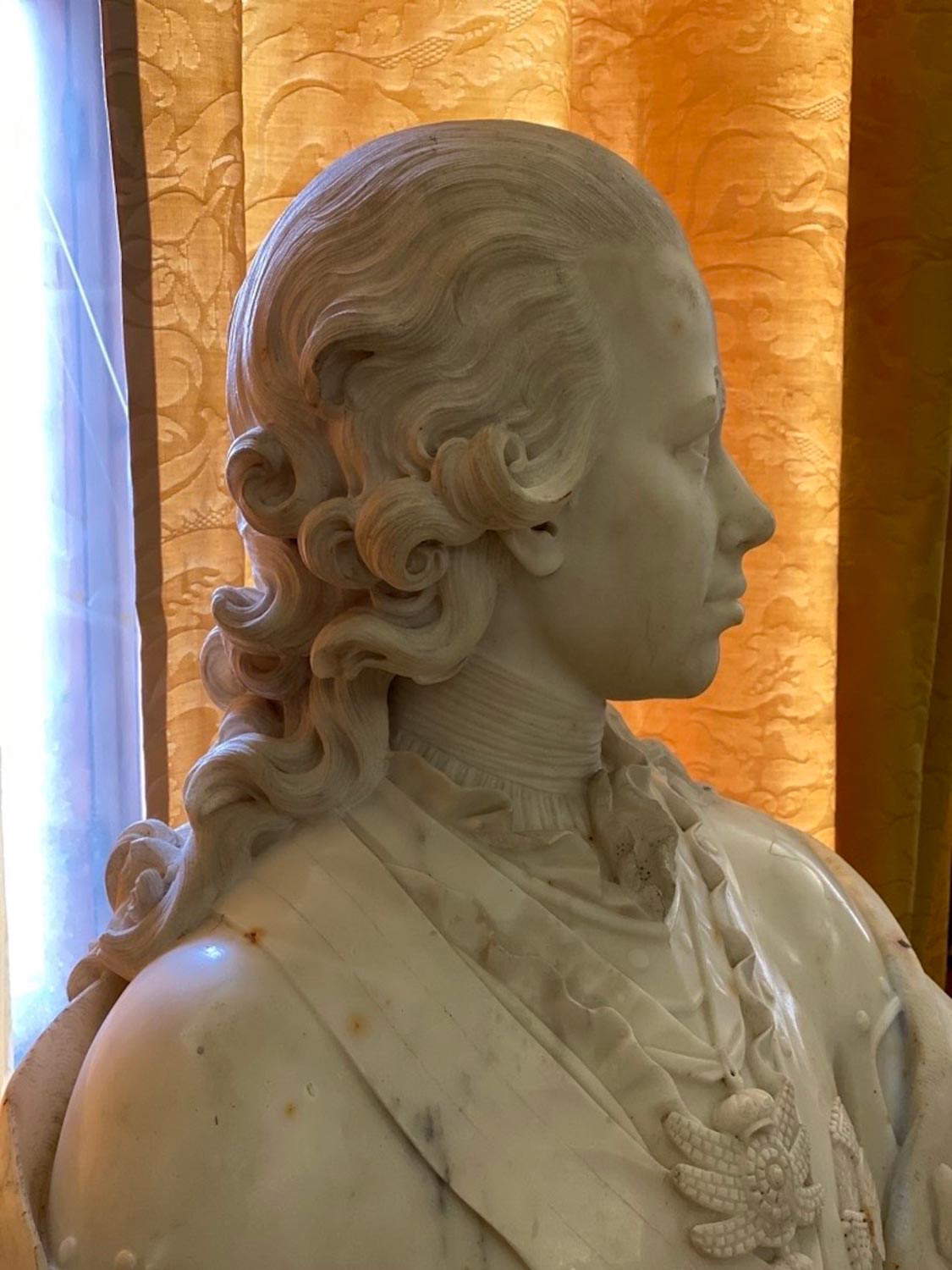 |
| Giovanni Antonio Cybei, Bust of Pietro Leopoldo Grand Duke of Tuscany (1771; marble, 77 x 70 x 45 cm; Pisa, Museo Nazionale di Palazzo Reale) |
 |
| Giovanni Antonio Cybei, Portrait of Francesco Del Testa Del Tignoso (1779; marble, 75 x 65 x 35 cm; Pisa, Church of San Martino in Chinzica) |
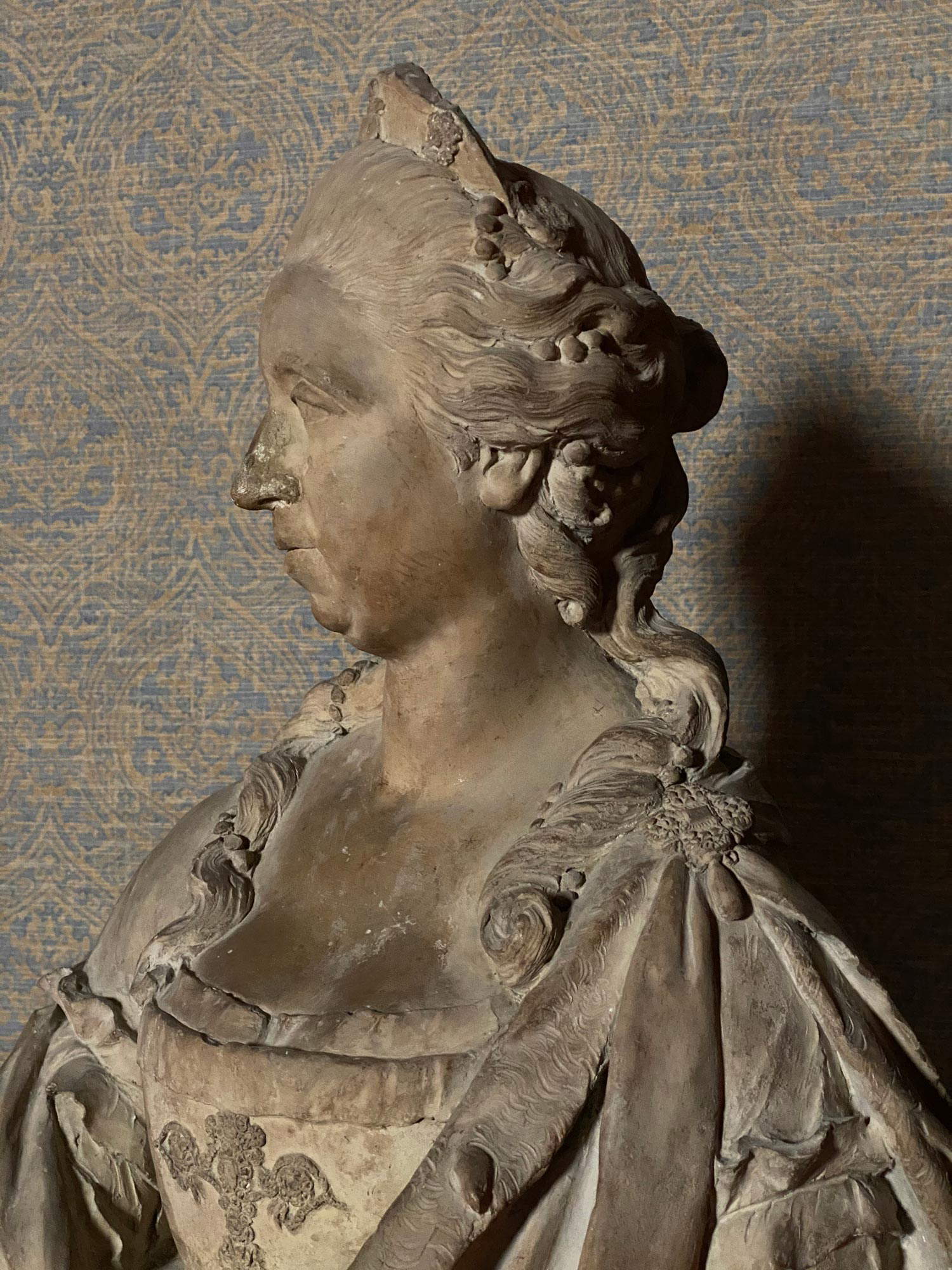 |
| Giovanni Antonio Cybei, Bust of Maria Teresa Cybo Malaspina (second half of the 18th century; terracotta, 26 x 43 x 65 cm; Carrara, Academy of Fine Arts) |
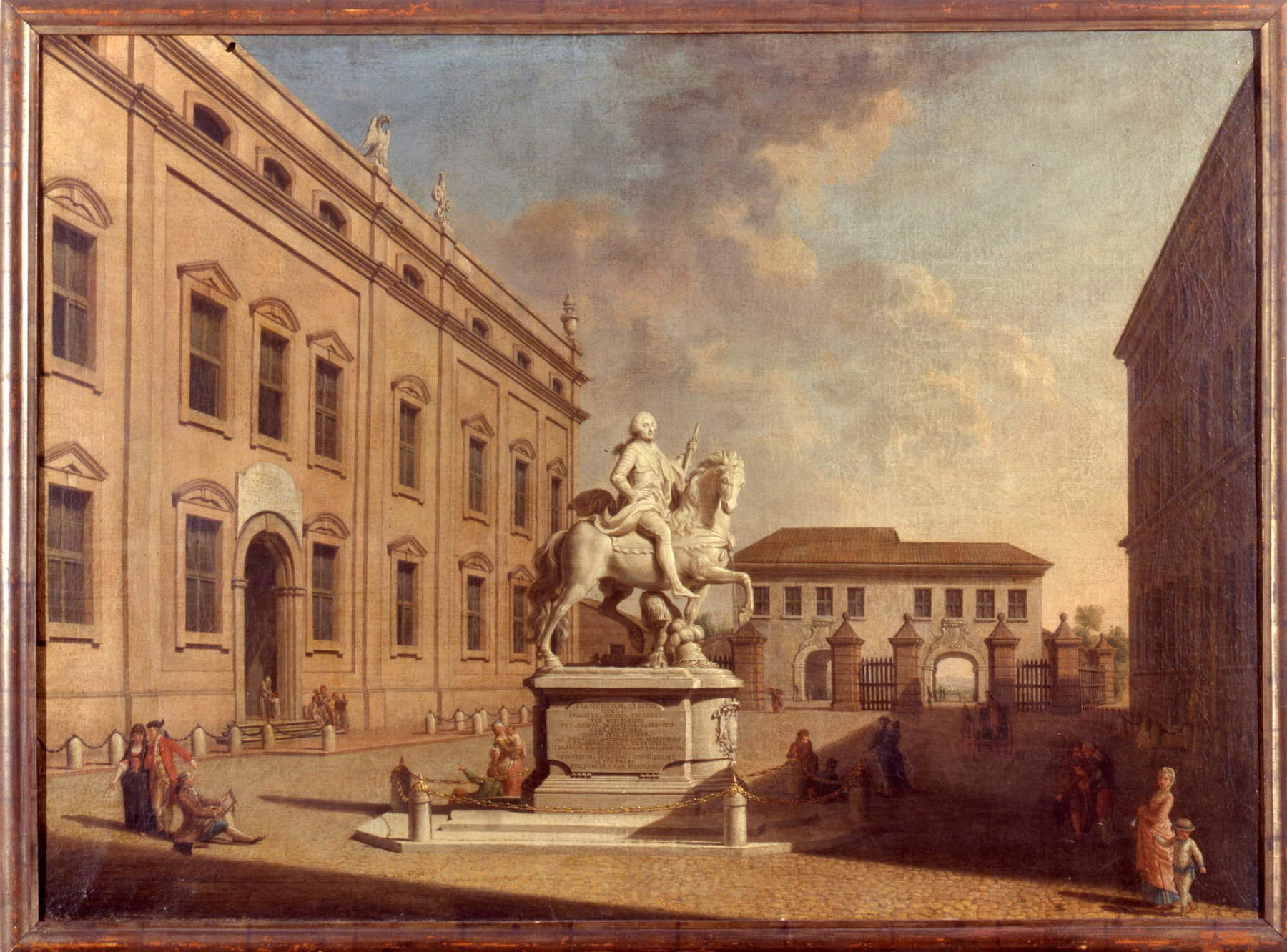 |
| Giovanni Maria Soli, Piazza SantAgostino in Modena with the equestrian monument of Francesco III (c. 1780; oil on canvas, 73 x 100 cm; Milan, Castello Sforzesco) |
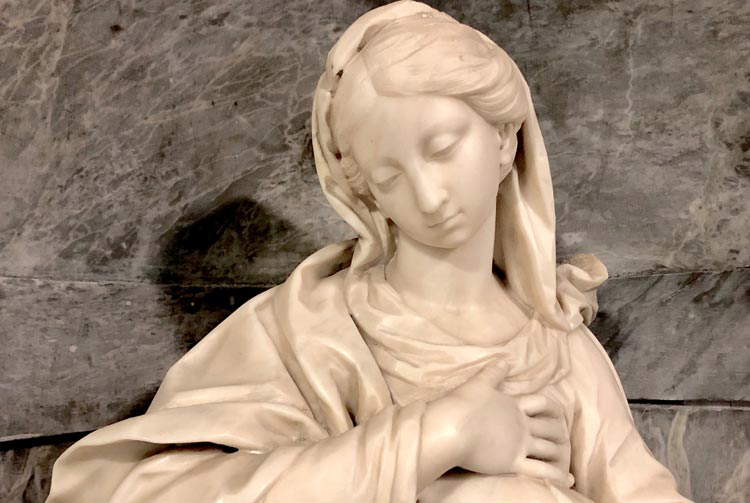 |
| Carrara to host first exhibition on Giovanni Antonio Cybei, great 18th century sculptor |
Warning: the translation into English of the original Italian article was created using automatic tools. We undertake to review all articles, but we do not guarantee the total absence of inaccuracies in the translation due to the program. You can find the original by clicking on the ITA button. If you find any mistake,please contact us.